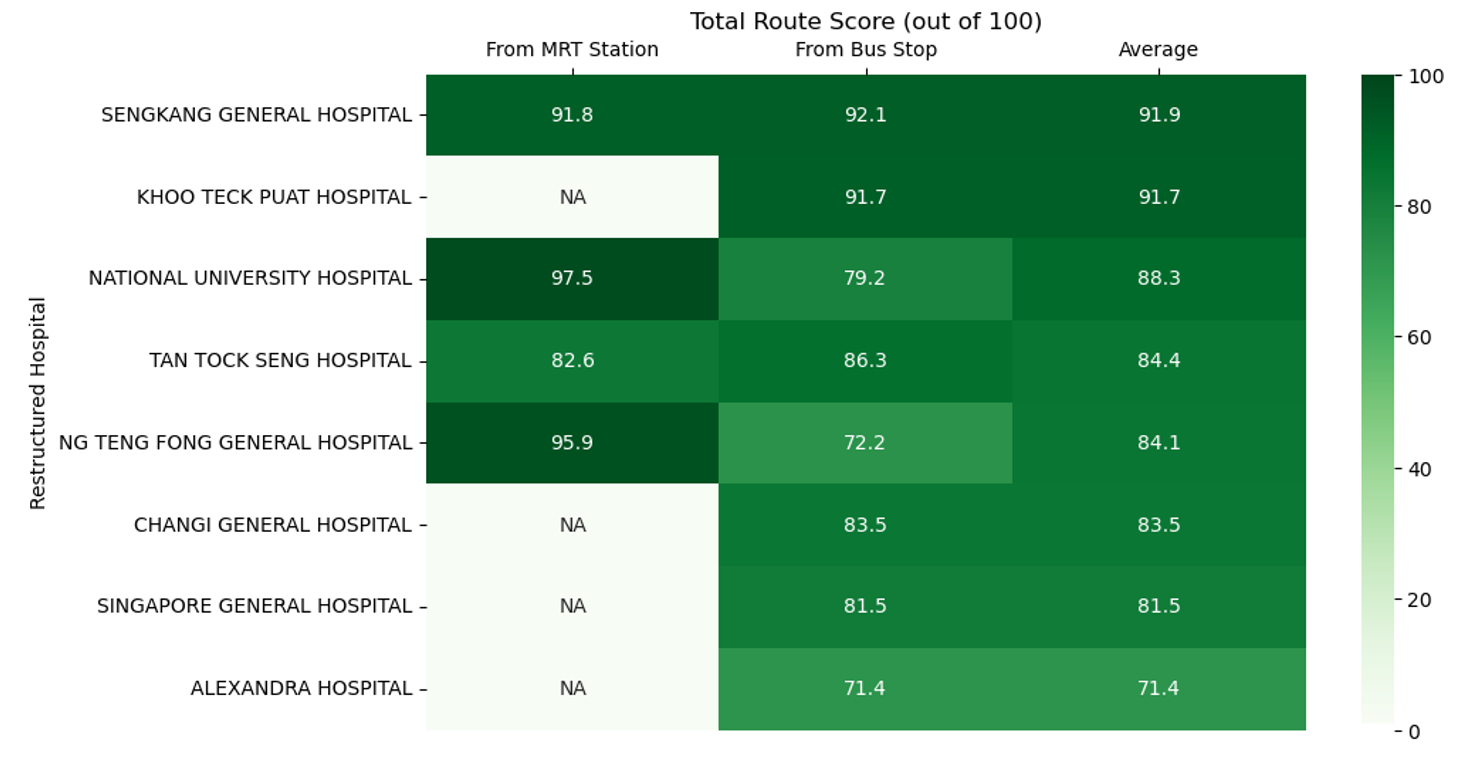Spatial Analysis Findings
How accessible are healthcare facilities based on transport mode choice?
Compared to private vehicle users, public transport users face on average:
2.8
times
as much travel time
10
%
of travel costs
18.3
mins
longer travel time
making public transport a less attractive option for seniors who can afford taking private vehicles.
$6.75
less travel cost
compelling price-sensitive seniors to continue using public transport.
(B) Community Hospitals
(C) Polyclinics
Walkability Assessment Findings
Total Walkability Scores

Key Walkability Issues
Based on the walkability assessment, key barriers were identified based on specific segments along routes from transit stops to the nearest restructured hospitals.Wayfinding
Lack of pictograms and staff to assist illiterate seniors
Lack of diversity of
wayfinding signage locations, causing crucial signage to be missed.
Safety
Exposure to vehicular traffic on footpaths, posing potential risk to seniors
with diminished ability to react to vehicular traffic.
Lack of tactile tiles for visually-impaired
Accessibility Issues for Wheelchair Users
Narrow pavement width
Level changes or uneven pavements
Lack of shelter/shade from weather elements